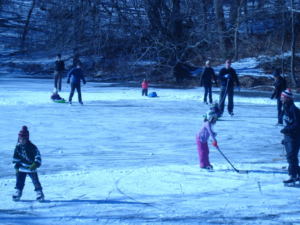
The Blackstone Parks Conservancy. Virtually everyone stumbles over that ‘s’, but no one has found another way to say that the (BPC) cares for two Blackstone parks: a 1.6-mile-long arboretum of sorts with a walking and running path between two roadways; and a 45-acre semi-wild park beside the Seekonk River. Both are loved for distinct qualities and require different care.
Having limited resources means that money and volunteer and Parks Department time spent on the two parks vary from year to year and sometimes it seems like a seesaw. But it’s fair to say that the Conservancy gives them equal attention, depending mainly on grants for major projects. What follows is only a very rough estimate of how BPC attentions are divided.
The Boulevard – Early in this millennium, the BPC raised funds to reroof the Trolley Shelter and, later, the small shelter. Donations later paid for the first all-over pruning of the Boulevard Park.
Annual expenditures on the Boulevard include money for new trees (over 300) and their watering and mulching. Many benches were paid for with donations as well. Then there are the annual concerts free to the public, which cost about $6,000 each year.
Professional analysis of the crumbling path and donated funds for a restored experimental section in 2019 reached nearly $100,000. Many more thousands will need to be raised in order to bring the path up to an acceptable standard.
The Blackstone Park Conservation District–less visible than the Boulevard–received a large infusion in 2012, when a federal grant enabled volunteers working with the RI Natural History Society to reclaim a three-acre section on Angell Street from Asiatic bittersweet and replant it with native species. Volunteers have painstakingly tended it since then.
Much volunteer work is at a professional level and it’s hard to estimate its value in terms of dollars. The BPC attempts to do so but inevitably falls short.
The second major infusion to Blackstone Park came mid-decade with grants from Department of Environmental Management and the Coastal Resources Management Council to tackle the badly worn five-acre plateau in the center section by rebuilding trails and planting in the highly erodible understory.
Wear and tear and erosion continue in both parks. The challenge in 2020, as always, will be to work smarter for Healthy Urban Green Space for All.
Jane Peterson



